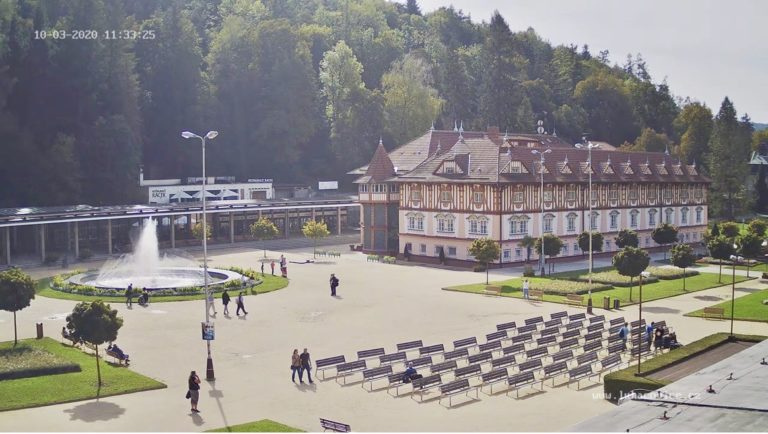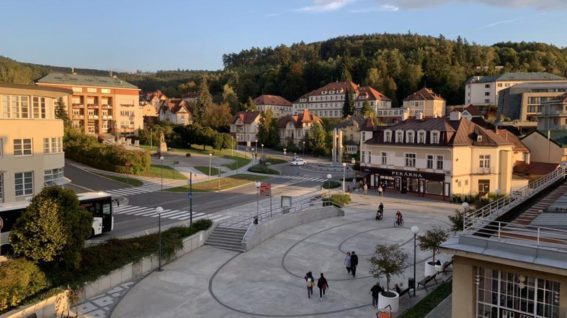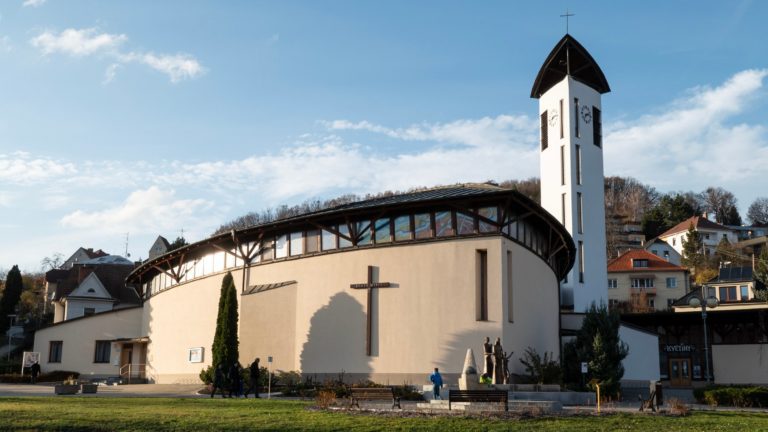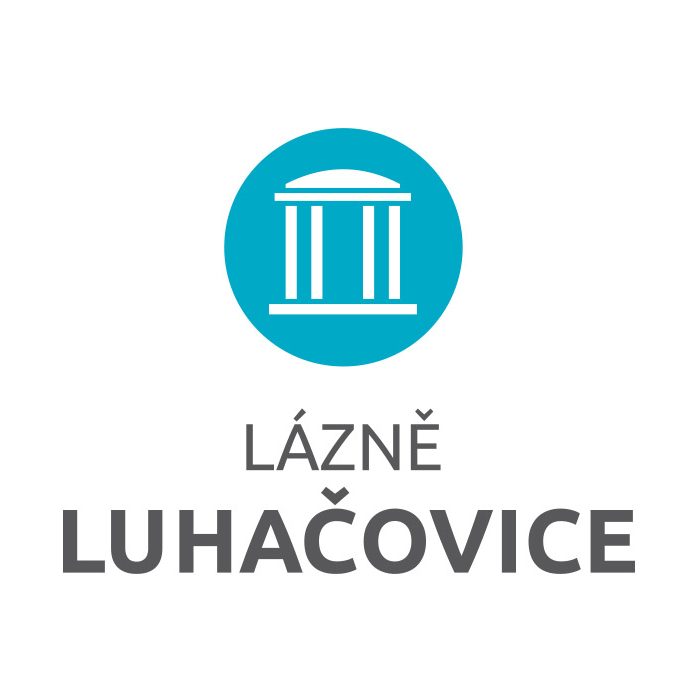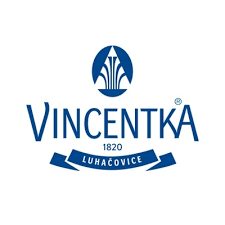The first traces of Slavic settlement in this region can be dated in the 7th and 8th centuries, which is documented by archaeological discoveries in Oboře u Luhačovic. For centuries, however, the region was not continuously populated. It was a border region, plagued by many enemy invasions, which in other centuries also made it difficult to build villages and settlements. First written mention of Luhačovice dates from 1412. This does not mean, however, that this was when Luhačovice was first settled. The oldest historical mention relating to the area is related to Prakšice and Biskupice in 1140. The above information concerning Luhačovice is evidence of continued settlement, which shifted from the plain to more hilly terrain. The structure of villages and cadastres formed and was preserved down to the middle of the 19th century without any greater changes. The local village suffered greatly from enemy incursions. In the middle of the 15th century, the Hungarian magnate Pankrác of St. Mikuláše, infamous leader of thieves preying on the entire region, owned the greater part of the estate. The source of income in the hilly Luhačovice region was cattle breeding and fruit cultivation, evidenced by the city’s seal – a spreading tree with apples, on the right a cutter and on the left a knife.
In 1590, Luhačovice came into the hands of the Bartodějský family from Bartoděj. After the Battle of the White Mountain (1620), the estate was confiscated and acquired by Maxmilián of Lichtenštejn. In 1629 he sold it to Gabriel Serenyi, in whose family it remained until 1945.This family played an extraordinary part in the further development of the city. The Serenyi were aware of the significance of the medicinal waters and their utility for business. On the northern slopes of Malé Kamenné, Count Ondřej Serenyi gave the word to develop the spring that comes to the surface with loud bubbling and so is called Bublavý. At the end of the 18th century, it was renamed and marked with a title taken from the Christian name of the male members of the noble family. In this case, this was Amanda Serenyi and therefore it took the name Amandka.
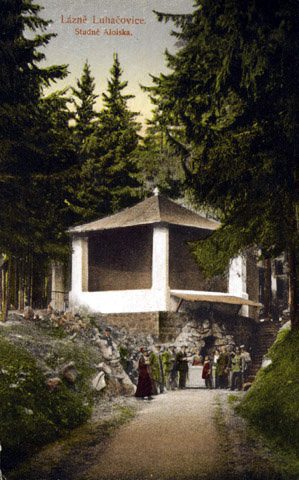
Around the year 1860, another spring was developed. Originally, it was called Hlavní, later it was renamed Vincentka after Count Vincent Serenyi. Reports of the healing power of Luhačovice waters spread into the surroundings and the first guests began to appear at the springs. For a stay of several days, which was a precondition for medicinal results, there was no accommodation, possibilities for dining and treatment facilities were lacking. Gradually, however, interest in the local springs grew and in 1789, near the springs, the then owner of the Luhačovice estate arranged the construction of an inn with several rooms to accommodate guests. The expansion of the spa was supported by reports of successful treatment and numerous medicinal works that highly praised the beneficial medicinal power of the “Luhačovice waters”. Professional evaluations with positive assessments were the cause of increased exports of mineral water as well as a reason for the growth in the number of patients.
At the end of the 18th century, the construction boom around the springs markedly increased. The Zámeček (Small Chateau), Vincencův dům (Vincent’s House), Stolařský dům (Carpenter’s House), Venkovský dům (Rural House) and others with guest rooms were built. In 1795, the small Chapel of St. Elizabeth was built with the seal of the Counts of Serenyi adorning its facade. The toll of the bell in its spire marks the beginning and end of the treatment day. The chapel is still standing today and is the oldest building of the spa centre. In the middle of the 19th century, the spa had 10 named houses with 83 rooms, two culinary buildings and two squares – Hlavní and Josefské. In 1895, the spa recorded the largest hitherto number of guests – about 1 700. Also in this year, however, previously hidden conflicts came to the fore. Spa guests complained about the deteriorating interior furnishings of spa buildings and treatment spaces. They demanded greater comfort, because frequently even basic furnishings were lacking. At the end of the 19th century, stagnation set in at the Luhačovice spa and the threatened bankruptcy of the Spa Exchange in the joint stock company in 1902 was a watershed for Luhačovice. The Újezdec u Luhačovic – Luhačovice railway was built, which became critical for the city; and railway carriages from Prague, Brno and Olomouc (1905) began to arrive directly in Luhačovice. At the beginning of 1902, the constituent meeting of the joint stock company was held and Count Otto Serenyi was elected chairman of the board, while MUDr. František Veselý became the director of the spas and initiator for the growth of the joint stock company, while the Slovak Cyril Holuby became its administrator. Everyone aspired for maximum development, for facilities and a high medicinal level; they paid very close attention to the mineral springs, and realised the significance of a qualitative and rich cultural and social life in the city.
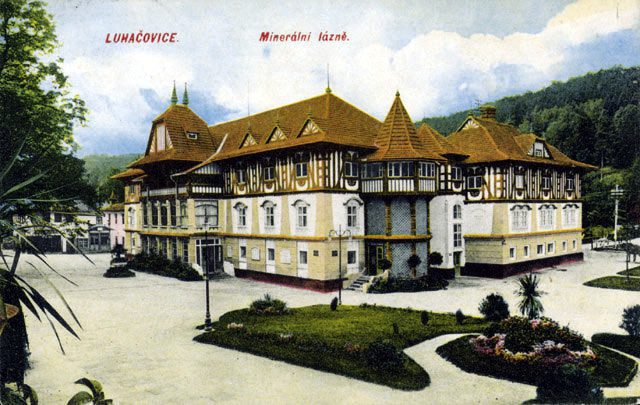
Together with this, the dream of a modern and comfortable spa was actualised by the architect Dušan Jurkovič. His work is the result of efforts to understand the environment in which he lived, to define and understand the people for whom it was created. His goal for the environment and a comprehension of the site can be admired today during a tour of Jurkovičova (formerly Janova) dům on Lázeňské náměstí (Spa Square), located nearby and the beautifully reconstructed Chaloupka villa today, or in the gorgeous Sluneční lázně (Sunshine Spa), the buildings Jestřabí and the Vodoléčebného ústavu (Hydrotherapeutic Facility). All these buildings are evidence of the great art of Dušan Jurkovič, but at the same time they proclaim the exceptionality of the surroundings that inspired their creator. The financial possibilities of the joint stock company, however, were not enough for the construction of a worthy cultural venue. This task fell to the Družstvo pro postavení lázeňského divadla (The Co-operative for the Construction of the Spa Theatre). The initiator and excited organiser of the entire enterprise was the famous spa doctor Dr. Zikmund Janke. Operation of the theatre began in 1908, although with great difficulties and debt. In spite of this, the theatre was built, greatly contributing to the cultural life of the spa.
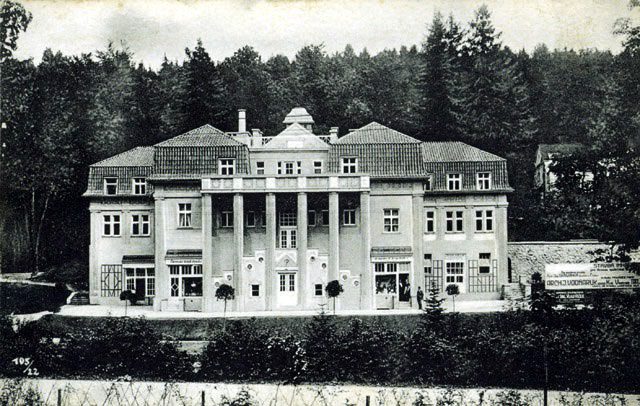
After wartime stagnation, the establishment of Czechoslovakia meant new development for Luhačovice. In 1922, in the vicinity of the station, the municipal office building and the town school were completed. Several famous architects shared in construction activity in Luhačovice and they impressed on the city its unique beauty and unrepeatable form. Architect Bohuslav Fuchs shared in the construction of Bílé čtvrti (The White Quarter), architect J. L. Holzl designed the hotel Arco (today the spa house Morava), the brothers Kubovi shared in the design for the Sokol hall built in 1930, among others. In 1928, the reservoir above Luhačovice was completed and filled. In 1931, the town was electrified. The view of the spa area radically changed in 1934 with the construction of the Společenský dům (Society House) after a design by the architect J. Roit. Through the great construction development, the population increased and modernisation of the city continued for almost 6 years after the submission of a request to the government that Luhačovice be raised to a city. It became so on 3 July 1936. From the submission of the request to be raised to a city, the Luhačovice municipality attempted to impose an urban stamp on the appearance of Luhačovice. A new landmark was built in the middle of the city with the spořitelny building (Savings Bank), with a gala opening on 15 August 1937, today the municipal office building. In the 1930s, Luhačovice had police authority and it was also a city of small enterprises, whose business was linked entirely to the spa and the seasonal character of the city; they had a city school, a secondary school and a kindergarten.
The new Sokol hall became the main site for cultural events after 1930 and after 1935, the Společenský dům (Society House) served this purpose in the spa campus, used frequently also outside the spa season. The Second World War and the occupation of Luhačovice after 16 March 1939 cut short this developing social and cultural life. In May 1941, Jews were transported from the city to Terezín, the majority of whom never returned. The same fate was in store for the Luhačovice Gypsies. Pensions, villas, hotels, even the school building were used to house German youth. Liberation brought a new stage of development to the Luhačovice spas. The management of the spas secured design documentation and set in motion the grand resolution of the spa square. The great colonnade, with its curved ground plan effect, mirrors the slopes of Velké Kamenné and is lightened by glass, enabling views on the surrounding greenery. The monumental material of Vincentka hall is softened by the horizontal lines of Malé kolonády (The Small Colonnade) and the polyclinic. Luhačovice spas thus acquired not only necessary functional spaces, but also a significant panoramic landmark, which together with the Jurkovič dům, forms the characteristic appearance of the city. Inseparable parts of the spa environment are the modified and decorated parks, statues and fountains.
The most famous Luhačovice fountain was created by Jan Kavan and brought from the International Exhibition EXPO 58 in Brussels, and therefore it is called Bruselská. On Lázeňské náměstí (Spa Square) is the Kruhová fontána (Circular Fountain). The newest fountain in Luhačovice is part of the landmark circular path built in 2000 on náměstí 28. října (Square of October 28th). The mineral springs are the most valuable and irreplaceable wealth of the spa city. They have long since been given considerable attention and care for the springs has never been interrupted. Hydro-geological research has confirmed that other relatively substantial sources of medicinal water exist and the false idea that the capacity of individual sources might be mutually negatively influenced has been overturned. In 2000, the newest Luhačovice spring, St. Joseph, was festively consecrated at the recently built Church of the Holy Family. The history of Luhačovice is closely related to buildings in the city, with nature, and the spa system. Cultural life was and is closely related to typical buildings – primarily the Lázeňské divadlo (Spa Theatre), Společenský dům (Society House), the municipal house of culture Elektra. Music has always taken a lead in cultural life, a fact taken for granted as part of treatment, thanks to the favourable impact on the spiritual state of the patient. Colonnade concerts are an inseparable part of the Luhačovice afternoon programme. Many artists have been treated in Luhačovice and have become patrons of the spa. Among these is Leoš Janáček, who visited Luhačovice twenty-five times, liked the place, and for whom it became a place of treatment, rest, composition activity and also fateful inspiration. The greater part of the Glagolitic Mass was composed in Luhačovice and the beginnings of the opera Liška Bystrouška. He was also grateful to Luhačovice Zálesí as a region for collecting folk songs.
Vl. Vokurka in his publication Janáček a Luhačovice characterises his closure with the spa as follows: “Janáček’s relationship to Luhačovice was faithful, direct and lasting. He returned annually to the spa, so he could escape into a frivolous, multifaceted and carefree life, where his voracious mental sensations found satisfaction, peace and at the same time an entire series of creative ideas and inspiration.” In his honour, the annual Janáček Festival of Music is held in Luhačovice. A series of other composers, conductors and singers liked to visit the spa, for example Otakar Ostrčil, Josef Suk, Dr. Janko Blaho, Libuše Domanínská , Sylvie Kodetová. The pleasant natural surroundings and incomparable atmosphere has become an inspiration for many photographers and painters. Several settled in Luhačovice permanently, like Otto Otmar, the impressionist František Pečinka and graphic artist Jiří Pacák. Luhačovice is inseparably connected with the creations of Antonín Slavíček, Joži Úprka, Zdeňek Vorlov and many others. Perhaps it is impossible to name all of those who love Luhačovice and who stayed or are now staying here. Both simple people and renowned personalities have spoken of the beauties of Luhačovice spa, the great healing power of the mineral springs, and the sweet air steeped in the aromatic essence from the surrounding forests. To this day, there is much to be admired, discovered, observed, and welcomed in Luhačovice. These continue to reach out to, amaze, and attract people to visit.
